Michelin celebrates 125 years as we thrash Toyota Camrys in tyre-safety demo

Michelin is celebrating their 125th anniversary this year, and as part of that, they held a media event at Abu Dhabi’s Yas Marina Circuit. Aside from a massive amount of information about company history, tyre safety and manufacture, as well as a chaperoned stint with some supercars around the race-track, the highlight of the day was the thrashing of Toyota Camry sedans in a tyre-safety demo.

We spent the morning learning about Michelin’s surprisingly rich history. With its origins in France back in 1889, Michelin was the first company to fit a car with pneumatic tyres in 1895, on which modern tyres are based today; the first to create the integrated-tube tyre in 1930 and the radial tyre in 1946; and the first airless “tweel” tyre in 2004. Heck, they even came up with the idea of road signs and maps as well as restaurant ratings, the latter being the Michelin Star system. Michelin is also heavily involved in motorsports, using it as a testing ground for new innovations, such as when they won Formula 1 with Ferrari in 1979, after introducing radial tyres to the sport.

Aside from the stint with the supercars, the more interesting drive-time of the day involved the aforementioned Toyota Camry cars. The first exercise was a demonstration of braking distance at different speeds. We floored the throttle from zero to 60 kph, at which point we hit the brakes hard, stopping the car in just under 10 metres, as measured at the demo. We then repeated the exercise, this time accelerating to 100 kph before hitting the brakes. The car stopped in almost 40 metres. The effect of speed on braking distances is much more than you’d think.

We then got to drive around a coned autocross course as fast as possible, first with properly-inflated tyres at 33 psi and then with under-inflated tyres at 17 psi. The difference was very noticeable. If you’ve read our past reviews, you’d know that the current Camry is actually a pretty decent handler, and it went through the course pretty cleanly in the first run. In the next run with the wrong tyre-pressures, the steering was heavier and responses to turning inputs were clearly sloppier, with much more tyre squeal and earlier understeer. The difference in tyre pressures was exaggerated in this demo, but it was obvious that wrong pressures do have an effect on handling, as well as increasing tyre wear and even causing higher tyre temperatures. It is recommended that you keep a tyre-pressure gauge and check your pressures every week when the tyres are cold, before you drive off.
There’s much more to Michelin’s legacy than we can get into here, but suffice it to say, their committment to tyre safety and further innovation is commendable.
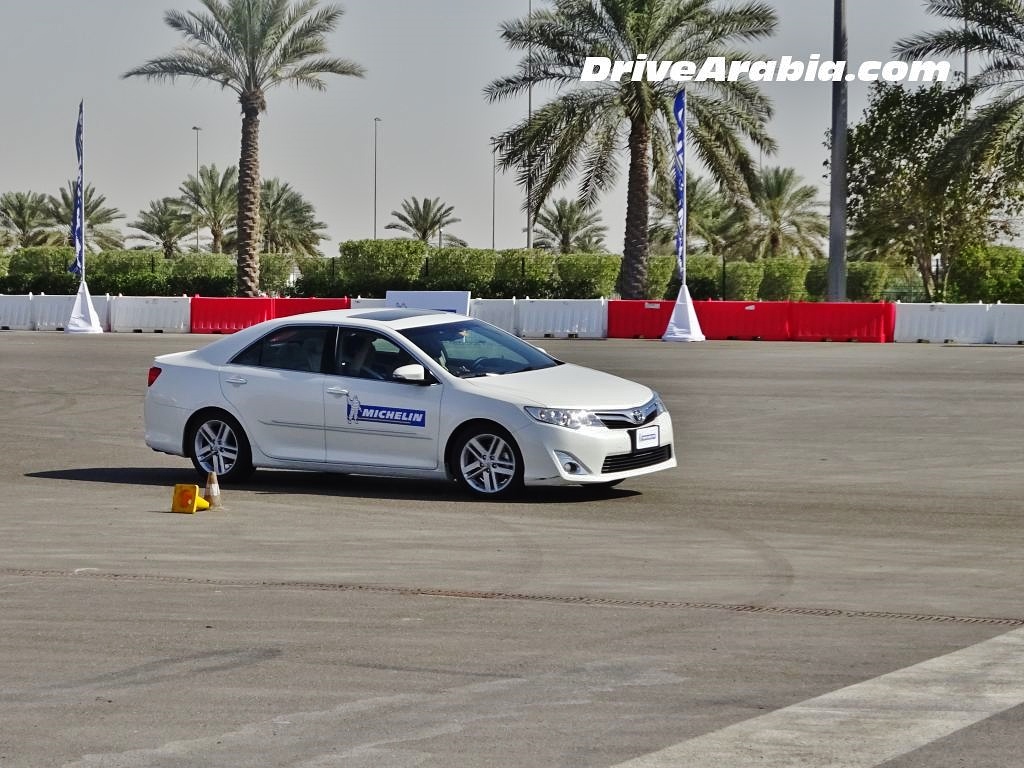
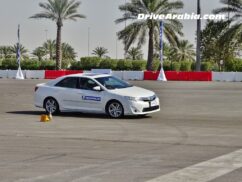
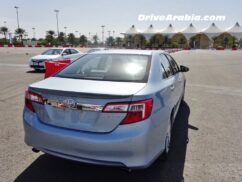
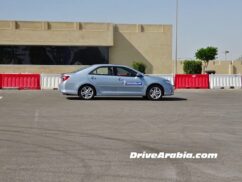
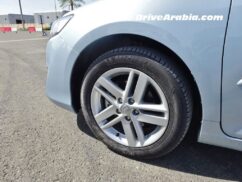
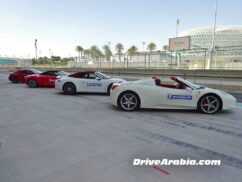
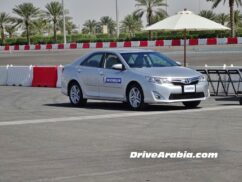
Comments
TOM
Are you kidding me. Of course driving the car with 17 psi tire pressure will cause it to be heavy feel in the steering less responsive. That would be true with all the cars. I actually like the idea that toyota designed thier steering system so you can feel when someting is wrong with the tires when underinflated. I have driven some cars that have the power steering setup so overpowering you couldn’t tell if you were driving on a over pressure tire or a near flat. Until of course you find yourself on the side of the road pulling the jack and spare out of the trunk because you didn’t notice soemthing was wrong with a low tire. Don’t you people commute distances everyday? I want a steering system to tell me when tires are underinflated with or without pressure sensors.
Hamid
Kidding you or not, most people don’t know that. I think the point was that lower pressure makes a difference, just done too much here to show what happens.
kevin
@TOM thats what author has also mentioned “The difference in tyre pressures was exaggerated in this demo, but it was obvious that wrong pressures do have an effect on handling,”. Nobody drives with 17psi, except desert safari guys but thats for different reason and environment for the trip. Yes your idea is good. Also if not daily, atleast during weekend an individual can check the tire pressure.
Mosa
I have two questions, I have read a lot about tires and stuff, but I still need the local drivers input..
1) Is nitrogen filling better for tires than standard air? Does it affect in handling/feel?
2) Which brands would you recommend for silent and comfort tires?
Leborde
Nitrogen, is told to be a bigger atom. Therefore, the sellers are claiming that air won’t loose and pressure doesn’t need to be adjusted. … Otherwise, it doesn’t change anything at all.
Comfort on tyres? Pirelli, from far, from as long as I heard about tyres and my dad before.
The rubber of a Pirelli is generally softer, resulting in a better comfort. You feel like you’re steering in the mayonnaise, or that you’re giving your car sleeper shoes, or like the steering system is englued into cotton. And you notice the difference on small hits.
The counterpart is that the tyre will age very fastly and the “smooth effect” wont last for long.
Michelin is, according to me, offering the best compromise between the super soft (comfort, grip, ageing fast – Pirelli) and the supper hard (harsh, lowest grip, ageing slow – Toyo), that’s why, according to me again, it’s a very appreciated brand across the world and the #1 tyre company in terms of sales.
Mosa
Thanks Leborde. But Michelins are super expensive as well isn’t it? And so are Pirellis? I was hoping to get something in the AED 500-600/tire range.
TheLateApex85
Kumho ECSTA LE SPORT Max Performance Summer Tyre is quite good, and it is reasonably priced, from my experience they can last for almost two years or 40000 km ( spiritual driving )
Permadi
1. Nitrogen doesn’t affect anything. Even normal air contains nitrogen. You can see in Fith Gear show below (note the guy was ex-race driver).
Just go to petrol pump once every 2 weeks to check the pressure.
Free of cost and won’t take more than 5 mins.
https://youtu.be/kmnZ4-EUbIk
2. All brands have different grades/performance/price. Usually can be grouped to 3 : Cheap, medium, high. The higher the performance (grip/braking) the higher the price will be, however the tires wont last long.
Just stick to big names (Bridgestone, Pirelli, Continental, Michelin, Yokohama) and you will be fine.
I suggest to buy the medium grade tires for best balance between performance/longetivity. You can get it for AED 500-600:
– Bridgestone Turanza.
– Michelin Primacy HP.
– Yokohama DB